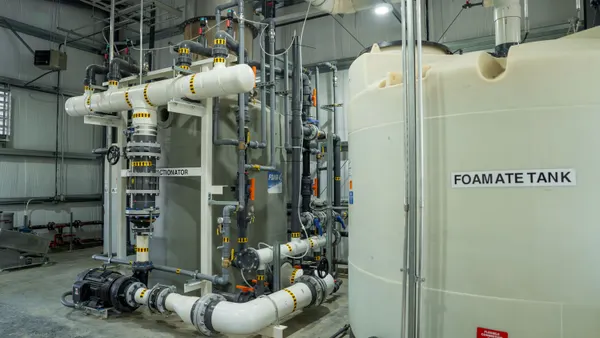Dive Brief:
- The city of Amarillo, TX's landfill has surpassed the permitted threshold of non-methane volatile organic compounds and must now install a new gas control system as required by the Texas Commission on Environmental Quality (TCEQ).
- This new system will cost about $5.5 million to install and $200,000 per year to maintain. The landfill improvement fund currently has $5.4 million, and receives $600,000 per year, so officials will likely need to pull additional money from the city's general fund.
- City officials are leaning toward a flare system, though some are concerned with environmental effects and are looking at energy recovery options.
Dive Insight:
Some officials say that heavy rainfall last year is the main reason for increased gas levels. Normally, Amarillo's arid climate means the landfill has less moisture and waste decomposes slower, thus producing less gas. The city of Denton, TX got around this by harvesting rainwater and recirculating leachate to create more moisture—which resulted in twice as much methane production.
Denton spent money on a system to turn this gas into energy at a similar cost to what Amarillo is facing. TCEQ would allow Amarillo to modify its permit for such an operation, though some say that the city's climate is still too dry to make it work. The Amarillo City Council is also looking at recycling as a way to reduce gas levels, because no citywide program currently exists.
If the city does go the route of flaring its gas, at least one council member has asked that it be done in an enclosed setting. The practice is still used at a number of sites, and currently being considered by new ones, but is seen by many as less desirable than capturing the gas for energy use.











